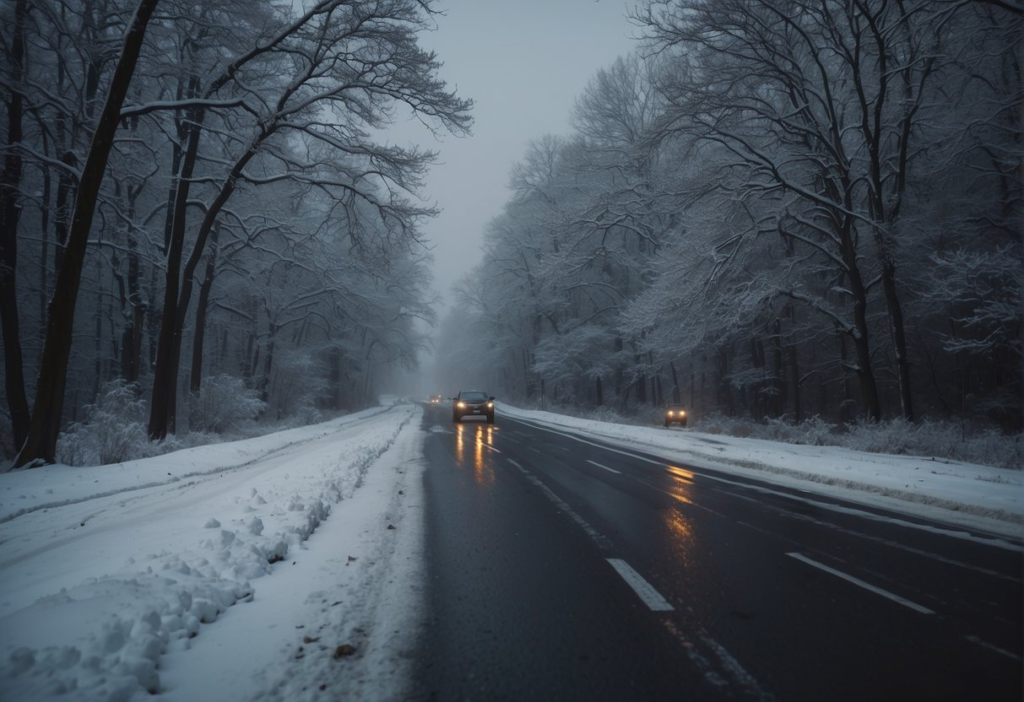[ad_1]

Differences due to the season have a big impression on highway circumstances, which in flip can affect the frequency and severity of automobile accidents. Climate patterns inherent to every season current distinctive challenges for drivers. In winter, ice and snow pose a danger of skidding and longer stopping distances. Spring, whereas bringing clearer circumstances, may result in moist roads from rain, inflicting hydroplaning. Summer season presents higher visibility and dry roads however can result in a rise in site visitors, in addition to increased charges of building work, which might contribute to accidents. Lastly, autumn introduces hazards akin to fallen leaves, which might obscure highway markings and grow to be slippery when moist, in addition to earlier sunsets which cut back visibility throughout peak journey occasions.
Understanding these seasonal components is essential for these concerned in site visitors administration, automobile security design, and highway upkeep. It additionally serves an academic goal for drivers, who can alter their driving habits accordingly to cut back the chance of being injured in an accident. As an example, slower speeds, elevated following distances, and making certain {that a} automobile is supplied with correct seasonal tools like snow tires are all methods that adapt to those seasonal challenges.
Evaluation of site visitors accident knowledge usually exhibits a correlation between these seasonal components and the incidence of highway accidents. This factors to the necessity for heightened consciousness and preparation as a part of driver education schemes. For transportation authorities, it emphasizes the significance of well timed and applicable changes to highway upkeep and site visitors administration insurance policies, making certain that highway security is optimized year-round and the probability of drivers or passengers being injured in an accident is minimized.
Affect of Climate on Accident Charges
Climate circumstances considerably have an effect on highway security and may enhance the probability of site visitors accidents. Particular climate patterns correlate with totally different seasonal dangers for drivers.
Winter Situations and Accident Chance
Throughout winter, drivers face hazardous highway circumstances akin to ice, snow, and sleet. These can cut back tire traction, impair visibility, and enhance stopping distances. Statistics present a spike in accidents following snowstorms or icy circumstances. A notable portion of winter accidents end in drivers or passengers being injured. The probability of a deadly accident can double within the presence of icy roads in comparison with dry circumstances.
Summer season Driving and Accident Developments
Summer season presents clearer roads, however longer daytime and trip journey enhance site visitors volumes. The warmth may cause automobile tools to fail, akin to tire blowouts, resulting in accidents. Dry summer time circumstances additionally contribute to increased speeds and extra extreme accidents. Knowledge signifies that the summer time months usually have a better incidence of highway customers being injured in an accident than different seasons.
Influence of Rain and Fog on Driving Security
Rain and fog considerably impair driving circumstances by lowering visibility and highway grip. Moist roads can double the chance of a automobile accident, as stopping distances enhance and automobiles are extra liable to hydroplane. They’re additionally infamous for inflicting multi-vehicle pile-ups resulting from decreased visibility. Drivers are suggested to keep up diminished speeds and enhance following distances to mitigate the chance of harm throughout rain and fog circumstances.
Human Elements and Seasonal Conduct
The incidence of automobile accidents is considerably influenced by differences due to the season in human habits, notably throughout holidays, trip intervals, and occasions affected by seasonal affective dysfunction.
Vacation Journey and Accident Frequency
The vacation season is related to a marked enhance in journey exercise. People touring to household gatherings or vacation locations contribute to a spike in site visitors density. Nationwide Freeway Visitors Security Administration knowledge signifies that the Christmas and New 12 months’s interval averages 34% extra accidents than the remainder of the yr, usually involving drivers injured in an accident resulting from components like fatigue and elevated consumption of alcohol.
Trip Durations and Visitors Quantity Will increase
Visitors volumes surge throughout frequent trip intervals, akin to summer time months and spring break. This enhance can result in congested roadways and a better probability of collisions. The next desk illustrates the connection between trip intervals and site visitors volumes:
| Trip Interval | Estimated Visitors Quantity Improve |
| Summer season Months | As much as 20% |
| Spring Break | 10-15% |
Increased site visitors quantity means extra vehicles on the highway and a higher probability that a person could also be injured in an accident.
Seasonal Affective Dysfunction and Driver Efficiency
Driver efficiency may be impacted by Seasonal Affective Dysfunction (SAD), a sort of despair that happens at a selected time of yr, usually within the winter. Signs akin to fatigue, problem concentrating, and sluggishness can impair driving talents. Throughout winter months, with diminished daytime, the chance of accidents can escalate, as drivers affected by SAD could have slower response occasions and impaired decision-making talents. Drivers are inspired to concentrate on their psychological well being and search remedy in the event that they expertise signs that would have an effect on their driving.
[ad_2]